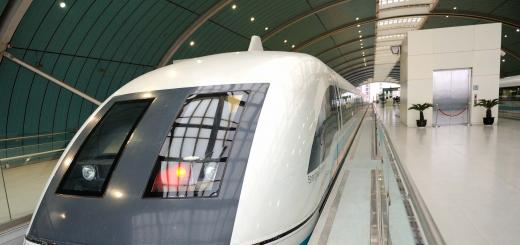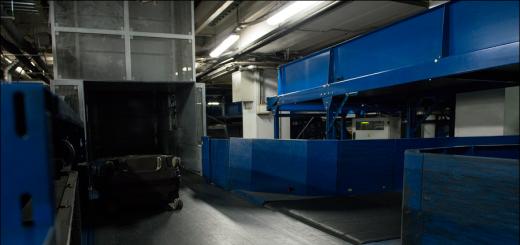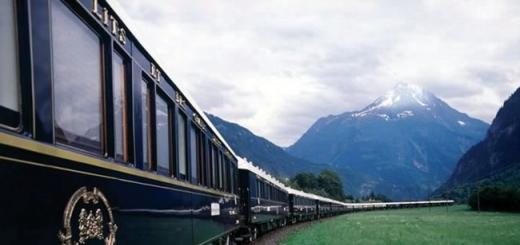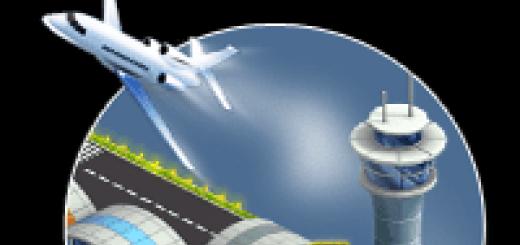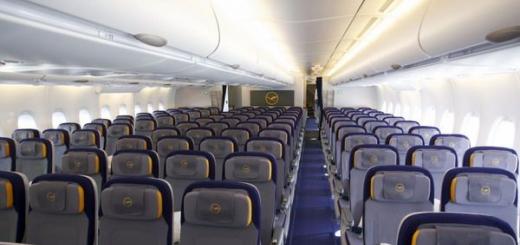A funicular is a vehicle that travels on rails. Only it is set in motion not by a locomotive, like a train, but by means of ropes. Funiculars are most often used to transport passengers on steep slopes over short distances - in the mountains, in resorts. But there are funiculars in some cities.
The funicular cars move with the help of a steel cable rigidly connected to these cars. At the end points, this cable is thrown over a winch and is continuously wound on drums driven by an electric motor. The electric motor is usually located at the top station.
Why can't normal trains run on these rails? First, because the funicular, as mentioned above, is used for short distances. Secondly, railway trains cannot overcome steep slopes without additional mechanical traction or even special mechanical means - holds that prevent the train from rolling down.
The funicular, on the other hand, is able to move along very steep slopes (with a slope of up to 35 degrees), using much less energy, therefore it is a more economical and environmentally friendly mode of transport in such conditions. For the convenience of passengers, funicular cars are designed in such a way that with any inclination of the rail track, the position of their floor remains close to horizontal.
There are different schemes for funiculars, but the most common is a two-car scheme. Such a funicular works on the principle of a double elevator: when one car rises, the other descends towards it.

Scheme of the movement of a two-car funicular
According to the device, the funicular is close to the cable car. The difference lies in the fact that cable-drawn trams travel along the cable without touching the ground:


The funicular requires a lot of time for the entry and exit of passengers and moves quite slowly - 3 meters per second, or 180 meters per minute. The capacity of the passenger funicular does not exceed 600 people per hour (for comparison: the cable car - up to 2000 people per hour). Therefore, funiculars are of limited use, but, thanks to these features, they are used not only as a means of transporting passengers. but also as a kind of attraction.
The name "funicular" has Latin roots, "funiculus" is a rope or rope. In its classic form, a funicular consists of two carts connected by a long cable, one of which is at the top and the other at the bottom. Rails are used as the roadway for the funicular. This is done for two reasons - firstly, the coefficient of rolling friction along the rails is lower than in other types of movement, and secondly, the rails eliminate the need to choose the direction of movement. The only significant limitation for the funicular is the length. Usually funiculars are made of small length, no more than two hundred meters. This is determined by the value of the specific elasticity of the traction rope, which, with a large length, can break under its own weight.
Device
To propel the funicular, an electric winch is usually used, mounted on top. Before the invention of the electric drive, the funicular was powered by filling the tank of the upper car with water, which was emptied after lowering down. In some ways, the principle of its operation is similar to the operation of a conventional elevator, the movement of the cabin of which accompanies the movement of the counterweight opposite in direction. To increase the throughput of the funicular, the counterweight of the raised car is the lowered car. This type of land transport is discrete in principle. Each of its working cycle has different directions of movement.
Since a classic funicular consists of two cars, their classification is usually made according to the number of tracks. There can be four of them - two for each car, three when the cars move on the same rail with the right and left sides, and two when there is only one track for each car. Three and double-track funiculars are supplied with sidings controlled by arrows. The funicular is always designed for each specific case. This is determined, in particular, by the fact that the cargo or passenger platform must have a strictly horizontal position.
Advantages
The funicular, as a lifting device, allows solving the problem of delivering passengers and goods in areas with large elevation changes with maximum efficiency and minimum costs. It is not as heavy as a conventional wheeled vehicle, but it does not need to build a road, damaging the environment. At the same time, relying on rails makes its carrying capacity significantly greater than that of a cable car. Its demand allows many companies, such as Optima Lift, to build their business on the design and construction of funiculars.
The company "Optima Lift" designs and creates both classic funiculars and devices similar to it in principle of operation. For example, funiculars with one carriage supported by a monorail. This technical solution allows you to create a lift with minimal cost and damage to the environment. A further development of funiculars was rack railways, which use a rack and pinion instead of a traction cable. Optima Lift manufactures rack railways of any configuration, including those with an individual cabin with its own drive mechanism. Such railways make it possible to create a path to a place of rest that fits into the surrounding nature as much as possible.
Last week we told you about how the cable car works, but today we will talk about another type of cable car - rail. Vehicles that carry passengers or goods on them are called funiculars. For the first time, the use of a funicular as a passenger transport was proposed in 1825, and almost 30 years later, the idea was implemented simultaneously in the Italian city of Genoa and the Austrian Sommering. Today, there are about 400 rail cable cars operating in the world. Most of them are located in the USA and Switzerland. How does the rail cable car work - about this in today's issue!
There are two main types of funiculars: one-car and two-car. The principle of operation of the first of them is quite simple: the engine, located at the top of the cable car, alternately raises and lowers the car with the help of a rope. On some roads, the operator controls the movement using a mechanical gripper. The grip compresses the rope, which moves in a special recess under the surface. In order to stop the car, the operator just needs to release the grip. The rope continues to move without stopping.

The most common type of funicular with two non-motor cars. They are rigidly connected by a rope thrown over a pulley. The pulley itself and the engine that rotates it are also located at the top station of the funicular. The engine sets in motion a rope laid between the support rails, at the ends of which the cars are fixed. Thus, they always move and stop at the same time, and part exactly in the middle of the line. Such a scheme is the most economical: energy is spent not on lifting and lowering the cars, but actually on moving the difference in weight of two cars loaded differently by passengers, as well as on overcoming the friction force and braking. It should be noted that the movement of the rope moving the wagons is reversible. Its direction changes whenever the wagon or wagons reach the end of the line.
If a two-car cable car has only one pair of rails, then a two-track section is made in the middle of the route so that oncoming cars can disperse. The wagons on such roads have different wheels on opposite sides. The wheels on the left side have a double ridge rim and the right side has a smooth rim. When approaching a siding, the double-ridged wheels force the car to always change to the left track.

If a rope breaks on the cable car or its tension is weakened, then a spring is automatically activated, squeezing the rail with wedges on both sides. In the event of an accident, this prevents the wagon from rolling downhill uncontrollably.

Funicular routes are usually made quite short - usually a few hundred meters - with a steep slope, reaching 35 degrees. The slope of the cable car is usually constant, but sometimes changes slightly in different sections. Funicular cars are designed individually for each route, taking into account its steepness. At the same time, the lines of the funicular never form networks, do not branch out and do not intersect.
Funiculars are not only one of the most impressive modes of transport in terms of panoramas that open from the windows, but also allow you to organize the transportation of people and goods along the steepest routes. We will tell you about the fourteen most amazing lifts.
(Total 13 photos)
Post sponsor: http://www.fancy-stuff.ru/ : The Fancy-Stuff.Ru online fashion store offers stylish and high-quality accessories with delivery in St. Petersburg and Moscow at affordable prices. Shopping with us for any fashionista will be especially pleasant and not ruinous!
Source: venividi.ru

1. Funiculars "Dakvesn" and "Monongiela" (Pittsburgh, USA)
At the turn of the 19th and 20th centuries, travel in the Rust Belt area of Pittsburgh was carried out on inclined railroads, which, in the absence of safe ordinary roads, served to transport goods and residents. Today, only two of Pittsburgh's legendary cable cars are still in service. Both of them ascend to the summit from the south side of Mount Washington. These are the super-cool 193-meter "Monongiela" (1870) - the oldest funicular in the United States, as well as the 242-meter "Dakwesn" (1877), which was restored by local residents after closing in early 1960. Both are owned by the City of Pittsburgh, but Duckwesn is operated by a non-profit organization. Both funiculars are listed on the US National Register of Historic Places. Now these vehicles attract quite a lot of tourists, especially "Dakvesn", which leads to a small museum, souvenir shop and observation deck at the very top of Mount Washington. Most Pittsburgh residents can show you many ways to admire Steel City. But to see it in all its glory, you will have to ride an old funicular at a speed of 10 kilometers per hour to climb to the top of Mount Washington. Even acrophobes can handle it.

2. Funicular "Artillery" (Valparaiso, Chile)
Those who have been to the colorful Chilean city of Valparaiso can say that without a funicular, you will not be able to get to the Paseo 21 de Mayo observation deck. This crazy bohemian paradise by the sea has been a UNESCO World Heritage Site since 2003. The city has many inclined railways that go around the quarters located on steep slopes. Despite the fact that there are only about 30 funiculars in Valparaiso (most of them appeared in the 1890s and early 1900s), only a small part of these famous "acensores" (elevators) are now actively used. Many of them have been declared national treasures. So which one to choose? Let's stop at the Artillery funicular (1893). It is not the oldest (Concepción and Cordillera were the first) and not the longest in the city (the trip there and back takes only 80 seconds), nevertheless, it has become the best photo spot in Valparaiso. Perhaps it's the brightly painted wooden carriages that make it so popular, or the fact that Paseo 21 de Mayo has the best view of the city. Unfortunately, it seems that the Artillery will soon be out of action, but there are other alternatives besides it.

3. "Flight of Angels" (Los Angeles, USA)
The bright and artsy center of Los Angeles is not famous for its cable cars, here you will find only the "Flight of the Angels" (1901) - the last inclined railway of the city, which once had a lot of them. Built on a steep but short slope, it connected Hill and Olive Streets in Bunker Hill, downtown Los Angeles. In 1969, after 68 years of service, the 90-meter funicular and its two carriages "Sinai" and "Olivet" were dismantled to make way for the area's ongoing redevelopment. Almost 30 years later, in 1996, the Flight of the Angels was finally remembered and restored near its original location. And then problems began: in 2001, a man died as a result of an accident on a funicular, and several more were injured. After an investigation, the National Transportation Safety Board determined that the reason for this was failures in the new transportation system. In 2010, when Sinai and Olivet repaired and replaced the faulty system, Angels Flight resumed operations. In 2011, it was briefly taken out of service for restoration work, and then closed again indefinitely in September 2013 after one of the cars derailed (no one was killed this time). Meanwhile, Los Angeles has been forced to restore the lift again, and it remains to be seen when the iconic railroad will welcome passengers again. After the last closure, the Los Angeles Times published an article in which it reported the following: "Angels Flight" is one of the few funiculars remaining in the country, it is a historical landmark of the city. In 1901, people traveled up and down for a penny. Today, a one-minute and four-second ride is still as cheap as 50 cents. As long as it's safe, let's keep driving."

4. "Carmelite" (Haifa, Israel)
Although most of the funiculars on our list offer unique views that can be observed while climbing the side of the mountain, in the case of the Carmelit, everything is different. This inclined railway, completely hidden underground, has earned the honorary title of the smallest subway in the world. "Carmelit" is the only underground transport in Israel. The tunnel through which the traffic goes is laid in Mount Carmel. Its construction began in 1956, and in 1959 the first passengers were received. From 1986 to 1992, a large-scale reconstruction was carried out, after which the funicular was opened again. There are four cars on the line (two for each train) and six stations. The upper station "Gan A-Em" is located at an altitude of 274 meters above sea level. "Kikar-Paris" - the lower station, where the depot and repair shops are located. The trip down the Carmelita from top to bottom takes about eight minutes.

5. "Fleibanen" (Bergen, Norway)
The 850-meter Fløibanen funicular transports visitors to the top of Fløien, one of the seven mountains that surround the Norwegian city of Bergen. Many people would like this short (8 minutes) trip to the sky with three stops along the way to last forever. The views from the panoramic windows of two cars (blue and red) with glass ceilings are simply indescribable. If the weather permits and there is enough time, be sure to rent a canoe to swim around Skumakerdike (the Shoemaker's Ditch). Grab a map and hike along the forest paths or dine on traditional Norwegian seafood at a restaurant 300 meters above sea level.

6. Fourth Street Elevator (Dubuc, Iowa, USA)
The Fourth Street Elevator, also known as the Fenelon Elevator, was built because a wealthy guy really wanted to drive home for his lunch break, but couldn't spend the full 30 minutes riding a horse-drawn cart to get there each time. The house of J. C. Graves (a banker and former senator) was at the top of a steep cliff, and from 1882 he began to ride back and forth in some kind of cable car. Although the fare has increased greatly since then, the funicular is still in operation. In 1978, it was listed on the National Register of Historic Places.

7. Central Funicular (Naples, Italy)
If you plan to visit the third largest city in Italy with a hilly landscape, be sure to ride the Metropolitana di Napoli and one of the four famous funiculars - "Chiaia" (1889), "Montesanto" (1891), "Central" (1928) and "Mergellina" (1931) - or at all in turn. Due to the chaotic landscape of the city and constant traffic jams, most residents prefer to ride the Central Funicular, which connects the four most important stations. This is the busiest and largest (1219 meters) inclined railway. The journey from Piazza Fuga at the station in Chichi Vomero to Augusteo takes just over 4 minutes. Speaking of the funiculars of Naples, it is worth mentioning the Vesuvius funicular, which has ceased to exist (guess why), built in 1800.

8. "Jonestown" (Jonestown, Pennsylvania, USA)
An hour and a half drive east to Cumbria County Airport, you will find "the steepest transport route in the world." With a total length of 273 meters, the system's spacious cable cars lead up the slope of Yoder Hill at an incredibly steep angle (70.9 degrees), reaching a mark of more than 487 meters. During major floods in 1936 and 1977, the path was used for its intended purpose - to evacuate the city. The rest of the time it is very popular with tourists - a round trip costs $4.

9. Lookout Mountain (Chattanooga, Tennessee, USA)
Called "America's most amazing mile," Lookout Mountain (1895) stretches just over a kilometer from Chattanooga's historic St. Elmo district to the top of Lookout Mountain. Those who are afraid of heights can close their eyes during the entire 15-minute trip up and down, but this is simply unforgivable given the scenic panoramic view that opens from the windows of the 42-seat car. Considering that the round trip costs $15, only tourists use this technical miracle. The cable car is especially popular with visitors interested in the American Civil War who want to get into the Chickamauga-Chattanooga National Park.

10. Montmartre (Paris, France)
The 108-meter Montmartre funicular in the 18th arrondissement of Paris is one of the most recognizable funiculars in the world and carries more than 2 million passengers a year. In 1991, the system became fully automatic and began to attract visitors with its super-modernity. The Montmartre funicular is considered part of the Paris metro system and is an alternative to the 300-step staircase leading to the Sacré-Coeur Catholic Church. The current "Montmartre" is no longer a funicular in the traditional sense, but an inclined elevator, given that it now operates on its own, not using counterweighted inclined lift technology, as classic funiculars do. The whole trip takes 90 seconds.

11. "Niesenbahn" (Bern, Switzerland)
The Nisenbahn, a funicular in the Oberland region of the Swiss Alps, connects the village of Melenen to the summit of the Swiss Pyramid. It is neither the oldest funicular in Switzerland (the oldest is the Giesbach opened in 1879), nor the steepest (its maximum angle of inclination is 68 degrees, while the Helmerbahn reaches 106), but it is the Nisenbahn that is the most long - 2.2 kilometers. Next to this funicular is built the longest staircase in the world, which consists of 11,767 steps.

12. Funicular Tram (Hong Kong)
Delivering tourists to Victoria Peak (1364 meters), this funicular tram starts its journey from a platform next to Hong Kong Park. It plays the role of an attraction for tourists, the trip on which costs about $5 in both directions. At the end station there is a shopping and entertainment center with many restaurants with observation decks. The trip to the "Peak Tower" - the very top of Victoria Peak - lasts 15 minutes, during which the funicular overcomes a distance of 3 kilometers at an angle of up to 45 degrees.

13. Wuppertal cableway (Dresden, Germany)
The 1,448 meter long Wuppertal cableway is a monorail tram system on overpasses. This is one of the oldest monorails. Most of it passes over the Wupper River at a height of 12 meters, and the train moves along it at a maximum speed of 60 km / h. Nowadays, the entire system has been modernized, but tourists are offered a ride on a real Kaiserwagen, the train that transported the emperor in 1900. There is also a second cable car in Dresden, but already on the ground. It leads from the Körnerplatz to the Weiser Hirsch quarter. On a 547-meter long track, the funicular passes through two tunnels, and the maximum slope of this road is only 29 degrees.
At the beginning of the sixteenth century, a new cable-drawn vehicle was built in picturesque Austria. With its help, fresh products were raised to the castle, located on a steep mountain (as it should be for any self-respecting castle). And although this design is suitable for use only on very specific stretches of the path, the invention was so successful that it was used in other places. This is how the world's first funicular appeared. More than five centuries have passed since then. And in the castle of Hohensalzburg, the very first funicular continues to function permanently. What is a funicular? Where can you see it today? How practical is its design? Why is it still used today? But why are there relatively few funiculars?
What is a funicular
The funicular is a small railroad located on a steep slope. Its fundamental difference from the railway in principle of work. On the railway, the driving force is the locomotive in which the engine is located. The operation of the funicular is based on cable traction. From this came its name - funiculus in Latin rope or rope.
The rope is rigidly attached to the car, and a winch is installed at the top of the lift, which serves as a lifting mechanism. However, only a person who has no idea what a funicular is can confuse a cable car with it. The most obvious difference is the mode of transportation. The funicular rides on rails. And the cable car trolleys hang on a rope.
Design practicality
To pull a car with passengers or cargo on a steep slope, you need to apply a lot of force. To facilitate the task, the designers attached a second car as a counterweight. That is, while one car is going up, the other is going down. And since the slope is steep, this to some extent compensates for the effort to lift the first car. Essentially, the winch expends power to overcome the force of friction, braking, and the difference in load between the cars. Therefore, the funicular is a very economical mode of transport. However, it is practical only on steep sections of the road. Where it is impractical to lay a conventional railway.
Attractive attraction
In addition to their practicality, funiculars invariably attract tourists. And this is not surprising. Small neat wagons move slowly, allowing you to fully enjoy the landscapes that open from a height. Within the boundaries of the city, the length of funicular lines, as a rule, does not exceed several hundred meters. And in the mountains, the funicular road can stretch for a couple of kilometers.

In the capital of Hungary, Budapest, there is one of the most popular funiculars among tourists. It stretched from the Danube embankment to the Buda Castle. It was built in 1870, and reconstructed after the Second World War. However, during the reconstruction, it was decided to leave the trailers their old look. True, the steam engine was still changed to an electric one. Climbing to the castle is not long and on foot, but during the operation of the funicular there is no end to passengers. Although often you have to spend more time in line than it would take to go up and down on foot.
Funicular in Vladivostok
Vladivostok funicular is one of the most famous sights of the city. This was greatly facilitated by the fact that it is the only one of its kind in the Far East. In the sixties of the last century, Nikita Khrushchev, inspired by a visit to San Francisco, decided to turn Vladivostok into an even more beautiful and modern city. He began by building a funicular. Unfortunately, things didn't go further than that. But the funicular is still functioning properly to this day. In addition to aesthetic pleasure, it also brings very tangible practical benefits, lifting up to 40 people at a time in less than two minutes at 180 meters. This does not seem like such an achievement, if you do not take into account the vertical drop, which in this short period reaches a full seventy meters.

To understand how much effort this saves for pedestrians, imagine a steep staircase with 368 steps. It is this number that you have to overcome in order to climb to the top of the hill, on which the upper station of the funicular is located. But, apparently, according to the sensations, this figure is very significantly increased, since the locals called this place the staircase of 1001 steps.
The beauty of cool

A ride on the Swiss Gelmerbahn funicular is not an adventure for the faint of heart. Overcoming steep slopes, when you literally look into the abyss that spreads nearby, gives an unforgettable experience. Those tourists who have been there can proudly declare that they know what a funicular is. Initially, it was designed exclusively for technical needs. With its help, people and goods were delivered to the local hydroelectric power station. But in 2001 it was decided to use it for tourism needs. The one way trip takes approximately 10 minutes. And the angle of inclination in some areas reaches 106 degrees.

